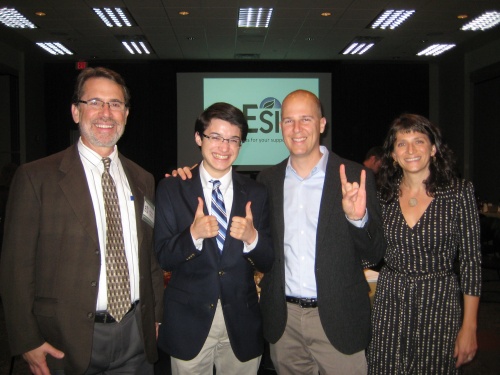Microbes have been in the news a lot lately, usually as part of a video or story about the problems they cause, as with the case of Listeria in ice cream.
Listeria is a terrible bacteria that lives in soil and water and can spread to and thrive in food processing plants. Getting rid of Listeria requires cooking and pasteurization, which helps before food is cooked, but not afterwards when it’s packaged. Listeria is hard to eliminate because it grows in cold temperatures.
But not all microbes are bad. Many, in fact most, are actually good.
As part of his TED talk, microbiologist Dr. Jonathan Eisen talks about how microbes play a role in our defense, boost our immune system, protect our auto-immune system, fight off stress, and more. In addition to Dr. Eisen’s video, here are more sites to help you learn about the benefits of microbes:
- TED video with Dr. Eisen: 6 great things microbes do for us
- Learn about Microbes: The Good Microbes
- What are microbes?
- Biology4Kids: Helpful Microbes
- Microbe Magic: Good bacteria
Better living through microbes
Microbes are all around us, and researchers are studying how microbes live and evolve to see how they can benefit us, such as to improve our health or create new products.
Dr. Lydia Contreras and her research group are studying how microbes live in toxic environments. (Dr. Contreras is an Assistant Professor, Chemical Engineering, at the University of Texas at Austin (UT Austin).) What they discover could help build new molecules to act as early warning systems for preventing disease.
Learn about the benefits of microbes with Dr. Contreras at the next Hot Science – Cool Talk presentation, Better living through microbes, on Friday, May 1, 2015. The lecture starts at 7:00 pm in the Welch Hall Auditorium on the UT Austin campus. Be sure to get there early because the community science fair with lots of fun activities starts at 5:45 pm.
Chemistry in high school is fun, but I really liked studying biology in high school, and I’m excited about learning more about microbes at this Hot Science – Cool Talks presentation on Friday.
ESI Third Annual Education and Outreach Dinner

Dr. Jay Banner, Commander Ben, Dr. Chris Kirk, and Dr. Rebecca Lewis at the 2014 UT ESI Education and Outreach Dinner
UT Austin Environmental Science Institute (ESI) puts together these awesome Hot Science – Cool Talks presentations that combine science, learning, and fun.
If you’re looking for an opportunity to support ESI, their outreach mission, and their program to educate future researchers in environmental science, you can get tickets to ESI’s third annual education outreach dinner, which will be on April 29, 2015, in the Google Fiber Space in downtown Austin.
Spring 2015 – Hot Science – Cool Talks
Here are some of my blog posts covering events for this spring semester. You can also catch up on Hot Science – Cool Talks past events.
- A New Age of Enlightenment with Hot Science – Cool Talks
Power Trip: The Story of Energy with Dr. Michael Webber – February 20, 2015 - Superstition in Science – UT Austin Hot Science Cool Talk
Superstition in Science with Dr. Bruce Hood – April 10, 2015 - Better Living Through Microbes with Dr. Lydia Contreras – May 1, 2015
Preview of talk on the ESI site.
The microbes presentation in May is the last one until this fall, so don’t miss it!
Your friend,
Ben













